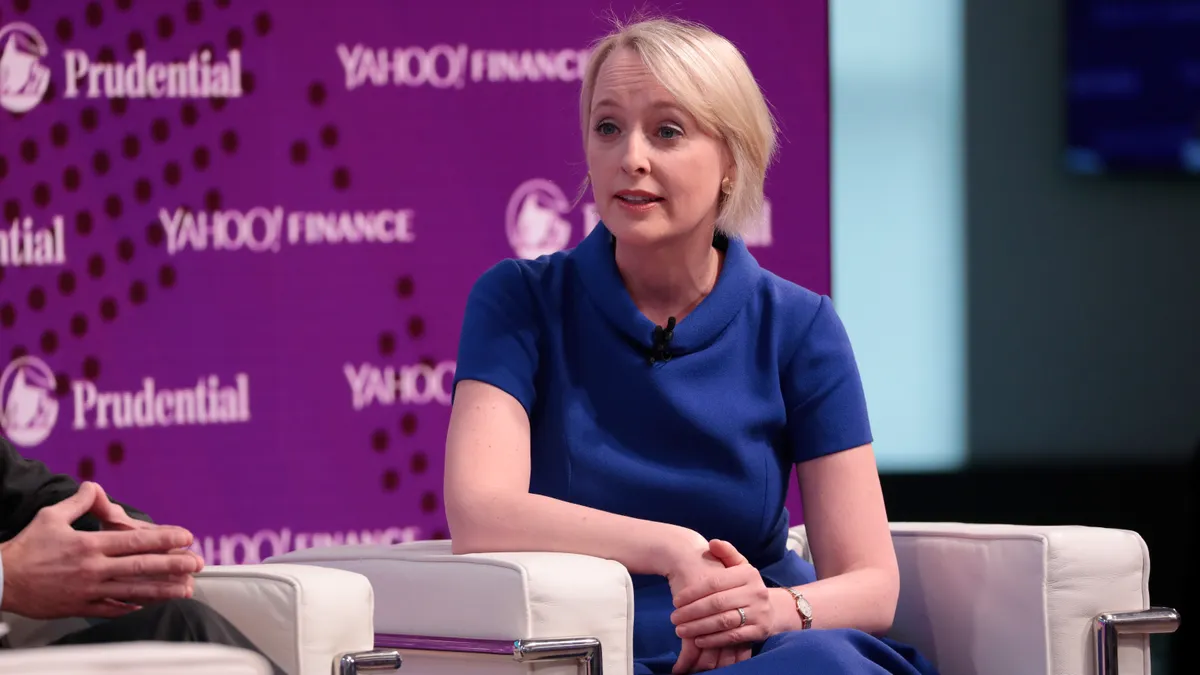Coca-Cola’s decision to scrap a policy that would have required its outside law firms to ensure at least 30% of the billed time on new matters was staffed by diverse attorneys has generated headlines in recent weeks and raised questions about possible broader implications. The company backed away from the policy amid concerns raised by shareholders and following a change in general counsel.
Nonetheless, Diversity Lab Founder and CEO Caren Ulrich Stacy told Legal Dive that there are plenty of other big-name legal departments moving ahead with efforts to encourage greater diversity among their outside counsel, and she sees no reason why Coke’s decision to pull the plug should halt the momentum of such initiatives.
Stacy said one reason for her optimism is that many companies are implementing progress-based rather than quota-based approaches to increasing the diversity of outside counsel.
“Most legal departments that do this successfully take into consideration that each firm, each practice group and each office is likely at a different starting point,” she said.
Stacy highlighted her organization’s Move the Needle Fund Diversity Dividends Collective as an example of the progress-based method being put into action.
A focus on data collection
Announced in May 2021, the Diversity Dividends Collective is a pilot program in which Diversity Lab is helping legal departments collect data about the diversity of the outside law firms they turn to most frequently.
The legal departments at HP, Gap, U.S. Bank and St. Jude Children’s Research Hospital were among the 15 initial project participants.
The legal departments at the Chan Zuckerberg Initiative, Fannie Mae, Petco and Pinterest are among the additional 15 participants who have since joined the initiative, which formally kicked off this year and is being led by Diversity Lab's Leila Hock and Valerie Portillo.
The information the participating legal departments request from their top 20 outside law firms is based on five core metrics that Diversity Lab says research shows are "the most impactful for inclusive and equitable teams.”
The law firms are asked for a breakdown of how many lawyers who worked on matters for the legal department in the past calendar year were a) women, b) from underrepresented racial and ethnic groups (disaggregated by population, if possible), c) LGBTQ+ lawyers and d) lawyers with disabilities.
The firms are also asked to detail how many of the relationship partners and leads for the legal department matters were from the four underrepresented groups, and how many of the lawyers who received business generation credit in the top one or two categories that most impact compensation were from those groups.
Legal departments also seek information about the law firms’ plans to increase DEI among their ranks moving forward as part of their inclusion blueprints.
"This metric really is about succession planning, pipeline, and are you ensuring that everybody, whether they're on that team or not yet, has equal access to the types of things that will help them succeed if and when they are on the team," Stacy said.
Creating data dashboards
Diversity Lab takes the diversity data that is collected and creates a dashboard for the legal departments featuring the responses from their top 20 outside firms by spend.
Stacy says Diversity Lab recently provided the 30 participating legal departments with dashboards from the first year of the collective, with a combined 260 firms showing up in the data.
The dashboards allow legal departments to compare the outside firms they use to one another on diversity metrics.
“They can see that this firm is making progress on staffing diverse teams, whereas this other firm is doing really well on succession planning and pipeline,” Stacy said.
The information also enables legal departments to review how a firm’s overall diversity measures up against the diversity of the teams it is providing to the client, as well as examine whether financial credit is going to the diverse lawyers on its team.
The law firms are able to access their own data as well, though the information in the dashboards is not made available to the public.
Conversations and accountability
Stacy said the primary goal of collecting the diversity data is to empower legal departments to discuss with their clients how to do better on the metrics where they are lagging.
“We're trying to give them enough actionable data that they can actually have a conversation, partner and make progress,” she said.
There are also some recommended accountability measures legal departments in the Diversity Dividends Collective agree to implement.
After reviewing two years of data, participating legal departments have committed to provide additional work to those firms that have made progress on at least three of the five diversity metrics and less work to firms that have not. It’s a carrot-and-stick approach.
“For the law firm to truly know the legal department cares, there's got to be some economics either in favor or not of that law firm for what they're doing and how they're doing it,” Stacy said.
Growing the initiative
Stacy highlighted that the potential for the project to have a significant impact in the legal profession is great, as the 30 participating legal departments represent billions of dollars in annual legal spend.
She is hopeful a growing number of legal departments will agree to take part moving forward, which would further amplify the influence of the project, including through the collective power of the purse.
“If the Diversity Dividends initiative becomes 400 legal departments, think about the impact it will have,” Stacy said.



















